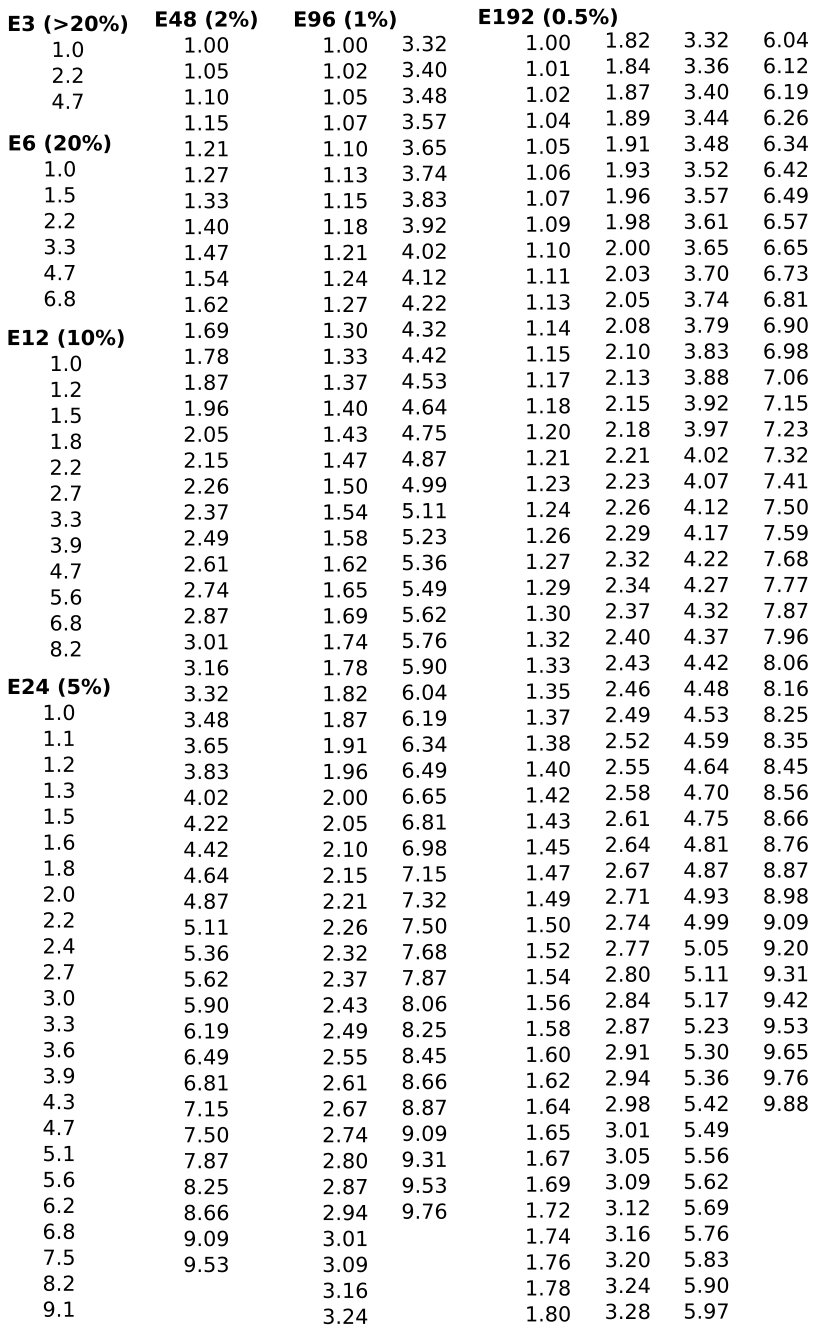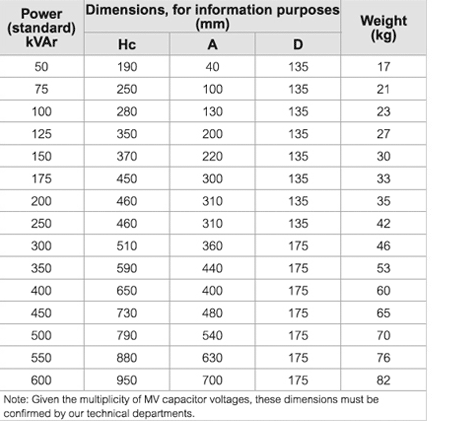

Metal oxide film resistors that are in common use today are available in the E24 series as are several other types. However the E24 series, being a much closer tolerance series is only available in the higher tolerance types. The E6 and E12 resistors are available in virtually all types of resistor. Further series (E48 and E96) are available, but are not as common as the ones given below. Values for resistors in these series are given below. The next is the E6 series with six values in each decade for a ☒0% tolerance, E12 series with 12 values in each decade for a ☑0%, E24 series with 24 values in each decade for a ±5% tolerance. This is seldom used as such because the associated tolerance is too wide for most of today's applications, although the basic values themselves may be used more widely to reduce stock holding. The most basic series within the E range is the E3 series which has just three values: 1, 2.2 and 4.7. The different sets of standard resistor values are known by their E-series numbers: E3 has three resistors in each decade, E6 has six, E12 has twelve, and so forth.

This process is followed through for all the values in a decade, creating a set of standard resistor values for each tolerance.

The resistance of this component at the bottom of its tolerance band is 1.2 ohms. Take then a resistor with a value of 1.5 ohms. The actual resistance at the top of the tolerance band is 1.2 ohms. Take as an example a resistor that has a value of 1 ohm and a tolerance of ☒0%. The different values are spaced such that the top of the tolerance band of one value and the bottom of the tolerance band of the next one do not overlap. The standard resistor values are organised into a set of series of values known as the E-series. This series is also used for a variety of other electronic components. More accurate tolerances are available for some resistors, but these are not as widely available and costs are higher.īy having these standard resistor values, electronic components from a variety of manufacturers can be chosen, making sourcing much easier and the cost of the components much less. Resistor tolerances are generally ☒0%, ☑0% ±5%, ☒% and ☑%. These standard resistor values have a logarithmically based sequence and this enables the different values to be spaced in such a way that they relate to the component tolerance or accuracy. Resistor values are organised into a set of different series of preferred values or standard resistor values.
#STANDARD RESISTOR VALUE TABLE HOW TO#
Resistors overview Carbon composition Carbon film Metal oxide film Metal film Wirewound SMD resistor MELF resistor Variable resistors Light dependent resistor Thermistor Varistor Resistor colour codes SMD resistor markings & codes Resistor specifications Where & how to buy resistors Standard resistor values & E series Standard Resistor Values: E3, E6, E12, E24, E48 & E96 To simplify resistor manufacture, handling, purchase & electronic circuit design, resistor values are arranged into standard resistor values conforming to the E series.


 0 kommentar(er)
0 kommentar(er)
